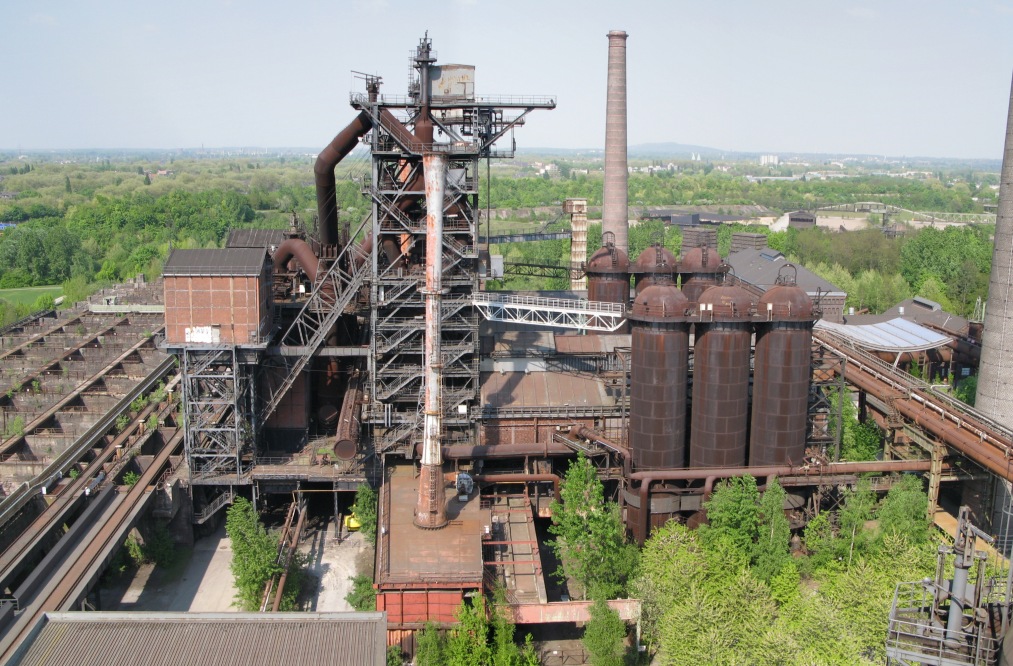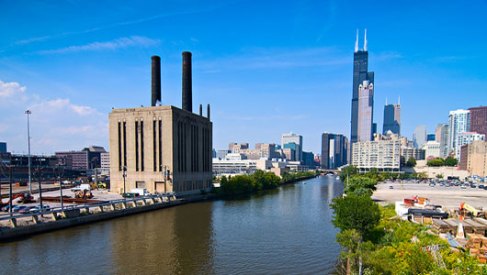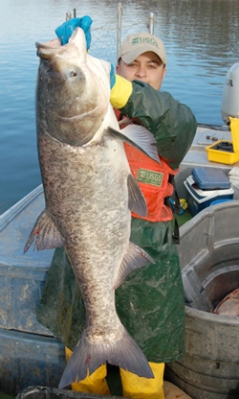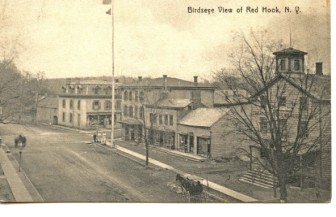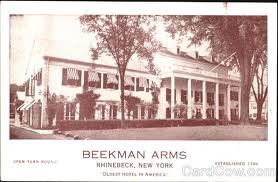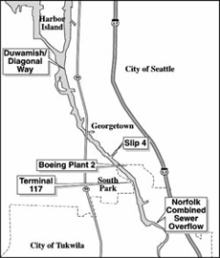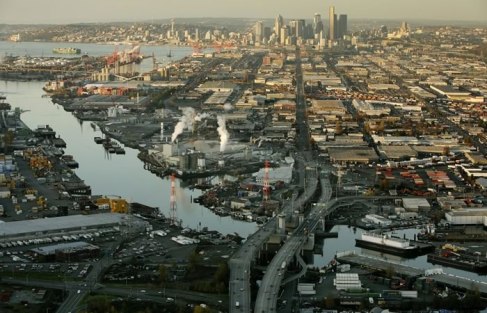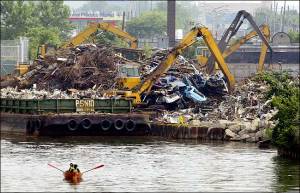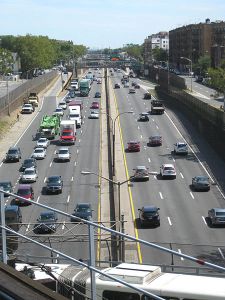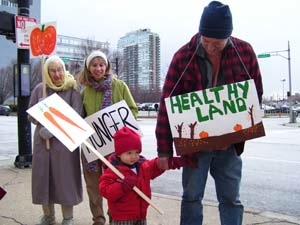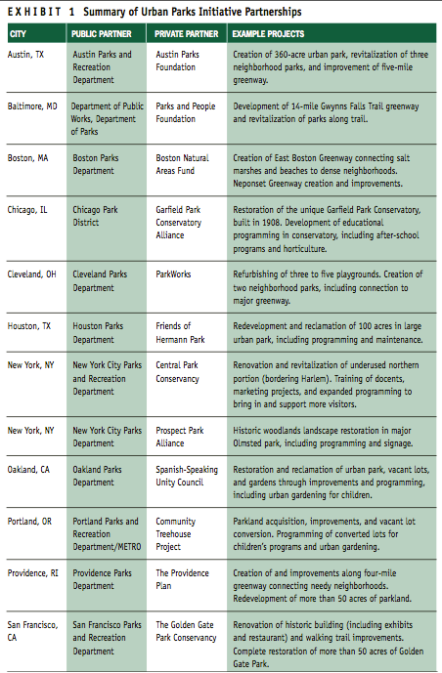Landscape architecture- Jean
The Salvadoran Migration: From Turmoil to Turmoil
Summary:
My research paper explores the conditions that a Salvadoran immigrant population had to face upon their arrival in the US. In specific, I will be looking at a marginalizing sense of security that confronted Salvadorans in the cities of New York and Los Angeles. In order to provide an idea of a hostile climate that challenged Salvadorans, I turn to the explanations of Richard Sennett and Mike Davis. Firstly however, I focus on David Harvey and several things he has written about the urban process in the 20th century in order to provide necessary background information on the conditions of American cities at the time (particularly New York). In the essays Neoliberalism and The City and The Urban Process Under Capitalism, Harvey does not only address the physicality of the city, he has also gives great insights on the history and politics behind it. Such insights can be used to understand the social context in the US during the 60s, 70s, and 80s (times of considerable Salvadoran immigration).
Synopsis:
Among the many political and economic affairs that Harvey points out in the two essays, we find New York City during the 60s with considerable social unrest and an initiative to make changes on behalf of a Neoliberal doctrine. In short, Harvey reveals that for the sake of creating the cities as we now know them, Neoliberal political thoughts and actions gave shape to a new form of administration and re-structured the municipal governments. It is in the midst of the violence that these changes inspired (and the civil rights movement) that the Salvadoran immigrants -fleeing an oppressive regime at home, and later fleeing a war- settle in the United States. With delinquency on the rise, living was made affordable for Salvadorans in dangerous neighborhoods. As most settled in Maryland, New York, and Los Angeles they engaged with fairly hostile environments. In these settlements some Salvadoran immigrants turned into ruthless criminals and took over many neighborhoods. Although James Diego Vigil from the University of California says that to find out why this happened more research is necessary, one thing is more certain; this is that American cities in reaction to this violence have taken up marginalizing methods of security. Regarding this, Richard Sennett’s introduction to Flesh and Stone suggests that the media has something to do with this as it produces a fear of touching. Mike Davis then establishes that by constantly throwing sensationalized accounts of killer Gang members, the media is reinforcing a justification of an urban apartheid…
asian carp epidemic forces chicago to reconsider design of water infrastructure – steven reiman
— The Chicago Sanitary and Ship Canal, built to protect Lake Michigan, now endangers the welfare of the Great Lakes
Originally intended to prevent waste from polluting the city’s drinking water, the Chicago Sanitary and Ship Canal reversed the flow of the Chicago River a century ago, diverting it from its natural course which empties into Lake Michigan, and sending it instead towards the Mississippi River.
Almost from the outset, the project was plagued by controversy. Downstream communities complained that they would be exposed to Chicago’s sewage; while members of the Great Lakes region worried that the reversal of flow, combined with Chicago’s enormous withdrawal of water for other municipal purposes, would slowly drain the Lakes. The Missouri Attorney General filed a suit during the canal’s construction asking the U.S. Supreme Court for a permanent injunction against its operation, however, the canal opened before any action could be taken, leading to a litigious battle that continues today.
While the amount of water withdrawn from Lake Michigan remains a major concern, today the canal is at the center of a new storm. When the course of the Chicago River was altered, it connected two watersheds, those of the Great Lakes and the Mississippi River, which had previously been isolated from one another. Now, aquatic species are able to travel freely between the two ecosystems.
One such species is the Asian Carp, an extremely invasive fish originally found in China. Catfish farmers in the southern United States imported the Asian carp in the 1970’s in an effort to control algae growth in commercial ponds. As a result of flooding throughout the last several decades, the carp has been washed out of those ponds and into other waterways such as the Mississippi and Illinois River. Today, Asian carp are migrating north at a rate of 50 miles per year, threatening the fragile ecosystems of the Great Lakes.
The carps’ voracious appetite, which made them prized cleaners in aquaculture ponds, makes them a great danger to the Great Lakes. Weighing up to 100 pounds, they are capable of consuming an amount nearly equal to their body weight each day. Combine this with their rapid growth and prolific reproduction, and the invasive carp are poised to out-compete native fish species, potentially depleting plankton and other small organisms, which form the base of the Great Lakes’ food web. At stake is not just the welfare of the ecosystem, but also the future of the Great Lakes’ $7 billion fishing industry.
With the Chicago Sanitary and Ship Canal serving as the only link between the Mississippi watershed and the Great Lakes, it has become the focal point of efforts to prevent the spread of carp into the Lakes. While several control methods have been implemented, including the poisoning of large stretches of waterway and the introduction of electrical barriers which pulse a non-lethal current though the canal, deterring fish from passing, the DNA of two Asian carp species – the Bighead and Silver carp – have been found in Lake Michigan. Now, the city of Chicago is debating whether it should restore the original flow of the Chicago River and close the Sanitary and Ship Canal all together, thus separating the two watersheds.
The threat that the Asian carp pose to the Great Lakes is very real. Their introduction could forever alter the ecology and economy of the world’s largest fresh water system. This epidemic should be considered a wake up call, encouraging other states to reconsider aging infrastructure, which may pose new challenges in today’s changing environment.
Video 1: http://www.msnbc.msn.com/id/44193607/ns/us_news-environment/t/reverse-chicago-river-thats-one-idea-stop-foreign-invader/#.T7AaqZ9YvhM
Video 2: http://www.youtube.com/watch?v=9tY3xJMRX-Y
Los Angeles River – Hayley
My paper examines the origins of the Los Angeles and Chicago Rivers – how they came to be, their part in industrialization, and how they got to the condition/status they’re at now. Where the Chicago River flows a strong 156 miles into the Mississippi, the Los Angeles River is practically a trickle traveling 50 miles through graffiti covered sewage channels into the Pacific. My goal is to examine how we can apply the two’s successes and pitfalls to the Fall Creek Project, especially because the organization, Friends of the Los Angeles River, has similar plans for their river:
Before:

(Hypothetical) After:
Detroit and Post-Industrial Spatial Economy
My research has focused on the nature of the post-industrial economy and its affects on the spatial environments of cities, specifically Detroit. I focus on the history and recent developments of the nature of the economic forces that shape the physical and cultural geography of the city. Detroit was one of the largest metropolitan areas in the United States from 1920 to 1950 It held the honor of the fourth largest city, due in part to the rapid expansion of the automobile industry, which was headquarters for the three biggest auto manufacturers in the world. This source of industry initially sparked major growth of the city, and it quickly became a bustling center for commerce and economic opportunity. Ford invented the assembly line, which slashed costs of production, allowing his workers to own their own product. This created a mobile and consuming work force of unskilled workers who could attain a middle-class lifestyle in an American good. The American Midwest cities had the asset of being regional transportation and communication hub, which attracted individuals due to its size and opportunities for employment. Its troubles have stemmed from their lack of industrial diversification, which has not been able to adapt to changing economic forces. For continually successful cities like Chicago, their economic status has relied on their ability to draw in and keep a number of young professionals and entrepreneurs. “Negative clusters” of industry act as deterrents to new residents, who are put off by the remaining symbols of past glories that now seem antiquated or obscene. As new industries become overshadowed as the years go by, cities which base their growth off the success of a specialized industry find themselves in difficult positions as technology advances. The automobile industry was the main driver of the U.S. economy as a whole, and the only driver in Detroit, which cannot compete for new residents in a high-tech economy. The coasts of the country have experienced a post-industrial spurt of growth, whereas the American Rust Belt maintained its solitary specialization of manufacturing trades.
Detroit’s beginnings as such a car-oriented city is interesting to compare to the new idea of the city, which is quickly transforming into a beacon of inspiration for how other cities can develop and maintain their significance in a sustainable and progressive way. As the city continues to lose residents, it needs to become the leader in new ways of imagining the city and provide a template for smart growth to cities around the world. The vast housing stock should not just be demolished to pave the way for new development, but retrofitting these buildings for new purposes to increase biodiversity in urban ecosystems, provide clean energy, and bring people closer to their food.
Economic Development of Rhinebeck vs. Red Hook, and Bard’s Influence – Hannah
My research paper explores how certain economic aspects of Rhinebeck and Red Hook’s past, respectively, have affected the key sources of income for the towns in present day. Through my research, I discovered that events such as the construction of the Hudson River Railroad and thus the Rhinecliff train station were major factors in changing the actual economy as well as shaping the economic appearance of Rhinebeck, as it may be perceived by an “outsider”, such as a Bard student. Through interviews with Red Hook residents/business owners and employees, I learned more about the impact Bard students have directly had on the Red Hook economy. However, speaking with local citizens also revealed the potentially greater effect that Bard indirectly has on the economy of both Red Hook and Rhinebeck, a result of Bard-hosted events such as Family Weekend in October, and the SummerScape festival each summer. Ultimately, my paper invites further questions that should be addressed regarding the relationship of the Bard community to each town, whether there is a desire to change that relationship, and if so, whether it should or could be changed.

Upper Red Hook 1920
“Aestheticization” and Gentrification – Zach
I am focusing on how efforts to “aestheticize” or “greenify” cities can be construed as gentrificative forces. Focusing on three major urban projects whose primary intentions are to re-introduce and incorporate “green” landscapes back into urban spaces, my goal is to analyze and determine a number of things: whether or not urban greening is detrimental to the longevity of a certain class of people living around a green space; if green parks include or exclude certain socioeconomic classes, if (re-)introducing a certain aesthetic to a neighborhood that has been depleted of any “tasteful” aesthetic is destructive to neighborhoods’ resilience via promoting gentrification. So far, I am focusing on the High Line in New York and the French Quarter in New Orleans.
The High Line is obvious – since the “green” park was built, real estate around the High Line has skyrocketed, excluding the working- and lower-classes from living near this space. Do hot projects such as the High Line create spaces that are covertly exclusionary? Do parks and projects that attract the young and bourgeois also limit access?
The French Quarter in New Orleans is a consciously aestheticized neighborhood meant to attract tourists. Due to its specific (created) sense of place, the French Quarter is a gentrified neighborhood because it so blatantly appeals to the “non-neighborhood.” I am still reading an essay on the French Quarter and gentrification, so I am at this time unable to give sufficient information on my findings.
I also need to find a third project to focus on… does anyone know of a park or public space that has been constructed in poorer neighborhoods that ultimately excludes the members of those neighborhoods?
Through researching these projects, I will try to come to a conclusion to see if aestheticizing and greenifying urban landscapes is detrimental to the residents of those landscapes, or exclusionary to certain types of visitors. I will then take my findings and come to a conclusion of whether or not the Fall Kills Project could be beneficial to unifying what seem to be broken neighborhoods surrounding the creek, or if it could have potentially dangerous consequences in the long run, as far as social politics are concerned. Please let me know if you have any thoughts or projects that I should seek out!!!
Bronx River – Gowri
The beaver, the state mammal of New York, and whose image adorns the official seal of New York City, has not been seen in New York for 200 years, until this week.
Questions of Citizenship and Access
- The Bronx River went from a flourishing and beautiful resource to a contaminated conduit for industrial and residential wastes two centuries ago.
- Before World war I it was a completely industrial base for trade and production. The Bronx underwent rapid growth after World War I. Extensions of the New York City Subway contributed to the increase in population as thousands of immigrants flooded the Bronx, resulting in a major boom in residential construction. The population was at this time consisted of Irish-americans, Italian-americans, Jewish-americans, French, German, And later on Hispanic and African-american. As most of these ethnic groups began to move out of the bronx during the 1940s & 50s, it left a huge population of hispanics and African-americans behind.
- During the mid-1960s to the mid-1970s, the Bronx went into an era of sharp decline in the residents. One theory is of course the Cross Bronx Expressway. Many have blamed the Cross Bronx Expressway for worsening the decay of neighborhoods in the South Bronx. Many of the neighborhoods it runs through have been continually poor since before its construction, primarily due to the lowered property value caused by the Expressway.
- There was also redlining
- By the mid-1700s as many as 12 mills were manufacturing paper, flour, pottery, tapestries, barrels and snuff, powered by water from the stream. The construction of the New York Central Railroad in the 1840s turned the valley into an industrial corridor, and by the end of the 19th century the Bronx River had degenerated into what one official commission called an “open sewer.”
- Not just a question of development but “ rights” and “citizenship” – poor neighborhood, racial discrimination and prison, unemployment rate at the time was 25%.
Majora Carter ““I believe that you shouldn’t have to leave your
neighborhood to live in a better one.”
Urban Farming in Detroit: Solutions for other De industrialized Cities – Antonia
De- industrialized cities throughout the country are currently suffering many problems. Detroit known as the Great American City and once was one of the largest in the country has suffered unimaginable affects from deindustrialization. Not only has deindustrialization in Detroit caused it to become a “shrinking” city, but the divide between race populations has had a huge impact on the city. White suburban sprawl that came as a response to a growing african american population during the Great Migration, caused huge depopulation and economic inequality. Many people inside and outside of the city see no hope for Detroit’s future, causing people to abandon the city in search for jobs and a new home. The abandonment of Detroit has allowed for the natural eco system to slowly return. Many abandoned buildings now have the non native Tree of Heaven growing out of them as well as many other considered weeds and animal life has begun to return. The vacant lots throughout the city have given many struggling families in the city hope for a future, vacant lots are transformed into urban gardens or farms providing healthy and cheap food. The history of urban farming in Detroit begins during the 1893 depression in 1894 by Mayor Hazen Pingree who saw allowing the unemployed to transform vacant lands into edible gardens an alternative means of charity. Detroit brings up many prevalent issues and solutions that can serve other cities throughout the country; suburban sprawl, food security, food deserts, income and racial inequality, urban vs nature separation, urban farming and education, community and entrepreneurship and most importantly rights to the city.
Urban farms in Detroit are not only providing access to healthy food; they are resources for education and guidance for teen mothers. At the Catherine Ferguson Academy, a public school started in 1985, the school provides a viable option for teen mothers seeking support and education. Child care is offered for teen mothers attending the school, the classes offered focus mainly on practical homesteading and child care skills, connecting to the schools mission, “to prevent the pregnancy cycle from reoccurring in the next generation of infants” (Grown in Detroit). Some of the classes that school offers are; music, home repair, parenting, fine arts, and technology. One of the great successes of this school is its ability to meet the needs of teenage mothers, many pregnant teens are unable to go to school, because of their children, time and lack of money. At Catherine Ferguson teen mothers are their priority. The farm that is connected to their school provides all of the students access to food and urban farming education. This school offers a tangible vision of self reliance and a future to teen mothers. Part of the schools requirement is that their students attend college after the Academy. Solnit describes the image of the academy as “a school for teenage mothers that opens on to a working farm, complete with apple orchard, horses, ducks, long rows of cauliflower and broccoli, and a red barn the girls built themselves” (solnit 72). This unique and innovative school is not exempt from budget cuts, on April 15, 2011 the students of the Academy staged a sit in at their school’s library after they were told that their school would be closed. The police brutally disrupted the sit in, arresting the teenagers and smashing their cell phones. Many of the girls who spoke about the experience were proud that they stood up for their school, because “ It’s time for all of us to stand up, it’s our future. We can’t find another school that does what Catherine Ferguson does. I am thankful to BAMN and our supporters because they truly showed us we do have a sense of hope, that there is something you can do about what happens” (YOUNG MOTHER DESCRIBES OCCUPATION OF CATHERINE FERGUSON ACADEMY). After a long battle against the city the school has stayed opened, but not as a public school, rather a charter school. The transformation of this school from public to charter brings up the conversation of rights to the city. Who should decide if a school is shut down or if an urban garden is demolished? Do the citizens have a right to grow their own food and create the schools they want? All of these questions are essential to ask in the case of the Catherine Ferguson Academy as well as all other public schools in jeopardy of closing and urban farms that are in constant danger of being demolished.




http://astorservices.org/history.php
http://astorservices.org/history.php
Hey guys !
So my project is basically focusing on the history of Poughkeepsie and the stereotypes that people associate with it. Throughout my research answers have varied some positive and some severely negative. For example one person stated ” Poughkeepsie is disgusting in every way – when ever I’m driving through i feel unsafe and nasty” Another said ” I only ever go to Poughkeepsie when I’m taking the train home ” .so I’ll be talking about the interviews that i have done and the data i have collected . Another aspect of my paper will be focusing on the Astor house which is a non profit organization that seeks to provide children with medical help, education and respect. The children that reside at Astor house are at risk of being put in the foster care system , have a mental or physical set back or their family has been deemed unsafe.Astor house has been around since the early 50’s and is an amazing organization that i feel has been looked over and not fully acknowledged . ( I’ll go into more details when i give the presentation.)
Sailing Up My Dirty Stream- How Song Changed the Health of the Hudson River- Lissy D.
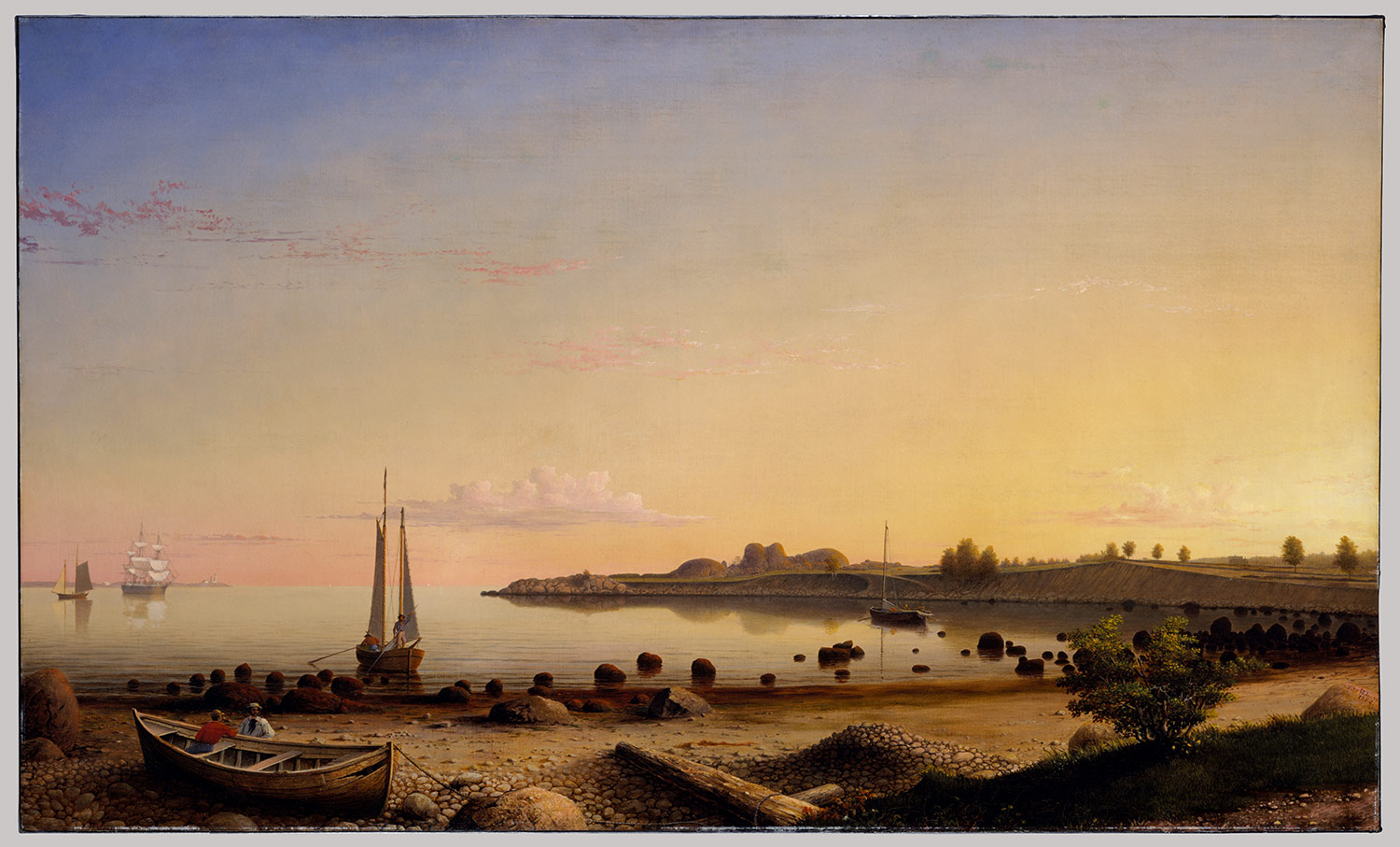


Steamboats were the major means of transportation of goods on the Hudson river. They also contributed to siltation in the Hudson River.



Recent Efforts for the Remediation of the Hudson River through music
Sailing Up My Dirty Stream (The Hudson River Song) 1961- by Pete Seeger
Sailing up my dirty stream
Still I love it and I’ll keep the dream
That some day, though maybe not this year
My Hudson River will once again run clear.
She starts high in the mountains of the north
Crystal clear and icy trickles forth
With just a few floating wrappers of chewing gum
Dropped by some hikers to warn of things to come.
At Glens Falls, five thousand honest hands
Work at the Consolidated Paper Plant
Five million gallons of waste a day,
Why should we do it any other way?
Down the valley one million toilet chains
Find my Hudson so convenient place to drain
And each little city says, “Who, me?
Do you think that sewage plants come free?”
Out in the ocean they say the water’s clear
But I live right at Beacon here
Half way between the mountains and sea,
Tacking to and fro, this thought returns to me:
Sailing up my dirty stream
Still I love it and I’ll dream
That some day, though maybe not this year
My Hudson and my country will run clear.
For my research paper, I’m focusing on the nature of the movement to clean up the Hudson River.
For most of the 20th century, the Hudson River was seen as a ecological disaster. It was famous for its polluted water, due to its industrial history. The Hudson River was basically perceived as an aquatic freeway, hosting every type of ship in its waters and fueling industrial activity. The idyllic images of the Hudson River School were replaced with feelings of disgust and embarrassment towards the river that brought such industrial success to the east coast.
Pete Seeger was one person that made it his mission to change this perception. Through his organization Clearwater, he helped turn the perception and the health of the Hudson River around. One thing I am particularly interested in, however, is how he used his talent for music to change this perception. He wrote many songs of hope that the hudson river would improve, and these songs became the soundtrack to the American Environmental movement of the 60’s. Many others followed, writing songs calling for environmental change.
Research: The American Lawn – Claire
Scholars disagree as to when lawns first cam over to America from England. While it’s clear that lawns had an early start in the U.S. — the Boston Commons have been a designated green space since 1634 — it took some time for them to infiltrate popular American culture and practice.
Bard professor Myra Armsted broke it down like this: “English landscape gardening began to influence landscaping for American elites in the eighteenth century, but not until the mid-1840s did landscape architecture for the upper-middle class have manuals. By the early twentieth century, suburban houses required neat lawns.” While these are the major trends that the American lawn followed, as Americans began to adapt the lawn they came to question how it should be structured and relate to the house. It should also be noted that early on that grass seed had to be imported from England to get the desired effect and that grass required a lot of upkeep with recommended cuttings between once and twice a fortnight. Seeing as the lawnmower was expensive and wasn’t widely available until the 1870s, a grass was generally cut by hand. It took approximately three skilled laborers a day to cut one acres worth of lawn. Cutting was essential to fostering the “perfect” lawn as the frequent cuttings did not permit the grass to grow long enough to seed itself forced new root networks and blades to grow. The constant cutting, likened to a man shaving his face every day by some scholars, encouraged the grass to grow into a sort of impenetrable, vegetal mat.
While the English climate is generally quite damp, irrigating one’s lawn was not a major concern until lawns were widely installed all over the United States. This was especially so in more arid regions such as the Midwestern prairies and American Southwest. Since, roughly, the 1980s there has been a push for “natural” lawns which feature an array of plants in the front yard and doing away with the needy, ecologically troubled grass lawn. But even if grass is expelled from the front, street-side, lawn what will become of parks, the lawns of civic buildings, college quads, cemeteries, and sports fields?
Over the course of two centuries grass has infiltrated nearly all aspects of American culture. It delves into issues of the public vs private spheres, the community vs the individual, being eco-friendly vs one’s own aesthetic and class issues. All American embassy’s feature a lawn. As John Greenlee wrote, “The lawn is a state of mind. It’s cartoon nature, Disney nature. It has to be the right color. No one wants to look at grass that isn’t green.” The American obsession with the emerald carpet is far reaching and exceptionally nuanced so while it might be easy to jump up and say “lawns suck down with laws” in doing so one challenges hundreds of years of culture, history, and sod.
Civic Agriculture: How community food production ties into community development –Emma Robinson
(Presentation notes, to be explained in further detail in-class)
Effects of Community Gardens on Neighborhoods:
Low cost, nutrient rich food. Food literacy. Property value improvement. Green space (mental and physical health). Possible crime reduction.
‘Like any other type of community development project, there is ample potential for a garden to be top-down, driven by the prioties of out side do gooders…’ – Payne & Fryman
Potential:
Civic connection, engagement, and improvement.
Civic Agriculture
“…sustainable agriculture could be seen as a logical antecedent to civic agriculture. The term ‘ civic agriculture ‘ captures the problem-solving foundations of sustainable agriculture. But civic agriculture goes further by referencing the emergence and growth of community-based agriculture and food production activities that not only meet consumer demands for fresh, safe, and locally produces foods but create jobs, encourage entrepreneurship, and strengthen community identity.” – Lyson
” … a sense of place and embodied work in a place are essential elements of civic agriculture and civic engagement. It is in literally feeling the “res publica” and in our individual and sweaty sacrifices to it that we begin to inhabit places in any deep and collective way. This sense of belonging, of “we-ness” and community, comes far less from choice than it does from necessity” – DeLind; 2002
Casitas
Before Rincon Criollo was created, its site also needed to be saved; the lot was filled with abandoned cars and garbage, another victim of the widespread disinvestment and rampant arson in the South Bronx in the late 1960s. In the 1970s, José Manuel “Chema” Soto and some friends cleared enough space for some folding chairs. While sitting by a bonfire there, Soto looked around and saw Puerto Rico. They cleared the lot, planted a small garden, and built a casita, or “little house” reminiscent of the wood farmhouses scattered through the Puerto Rican countryside. The neighborhood flocked to the site. Today, this is one of the oldest community gardens and casitas in the South Bronx, serving close to 300 members…
Rincon Criollo is also a testament to Jacobs’ “eyes on the street.” It is a haven for neighborhood children and senior citizens and a deterrent to street crime (cars belonging to the local police precinct are regularly parked next door, with the tacit understanding that they will be monitored by the nearly always-crowded casita).
The Importance of Public Parks – Abby Margolis
There is far more to public parks than what meets the eye. For my research paper I am studying the positive immediate and long-term effects that parks have on people. The inspiration and foundation for this topic comes from the Wallace Foundation’s Urban Parks Initiative, “a wide-ranging effort to determine how to improve the quality of urban parks, particularly in low-income neighborhoods, and to broaden urban leaders’ understanding of the importance of parks to the health and vitality of cities.” The Wallace Foundation is a national philanthropy foundation that aims to improve education and enrichment for disadvantaged children. As part of the approach, the foundation first funds projects to test new ideas for solving important social issues, then analyzes the successes and failures to fill critical knowledge gaps, and lastly communicates the results in order to help other people. The Wallace Foundation was named for DeWitt and Lila Wallace, co-founders of Reader’s Digest Magazine.
Parks have traditionally been viewed as open spaces that are mainly used and appreciated by community members. Even those who do not use parks appreciate them. One study by the Urban Parks Initiative found that 75% of respondents who said that they did not themselves use parks still reported receiving benefits from them, many of which tied to opportunities to children. Another advantage of parks is seen in studies that connect property values to proximity to green space, including neighborhood parks and urban forested areas. For example, Pennypack Park property values in Philadelphia rose from about $1,000 per acre at 2,500 feet from the park to $11,500 per acre at 40 feet from the park. Similarly, the price of residential property in three neighborhoods in Boulder, Colorado dropped by $4.20 for every foot farther away from the greenbelt.
The “new view” focuses more on the broader contributions parks can make to the liveliness of communities, along with their residents. These contributions include:
-Providing programs and opportunities for youth to build physical, intellectual, emotional, and social strength in an effort to influence rewarding choices to adolescence and adulthood.
-Aiding new residents into the workforce to find productive jobs by offering park-based employment opportunities in the community.
-Promoting residents to work together to make their community better by encouraging participation in park planning and management.
-Helping residents improve their health by providing a space to exercise and enjoy fresh air.
The broader view of parks recognizes parks as features that can achieve more job opportunities, youth development, public health, and community building. Although the initiative concluded in 2003, Wallace supported 19 public and private partnerships in 17 cities for creating new parks, reforesting urban areas, restoring landscape, and brining new activities to neighborhood and urban parks. The initiative helped secure 350 acres of new parkland and 50 miles of greenway trails as well as restoring 300 acres of existing parkland. In my research paper I will further explore why the Urban Parks Initiative came to an end and discover other programs that advocate for public parks.
The Wallace Foundation: http://www.wallacefoundation.org/Pages/default.aspx
Urban Parks Initiative: http://www.wallacefoundation.org/knowledge-center/urban-parks/Pages/default.aspx#tabs=1
The renewal of urban waterways through art, design and architecture – Anna
My research paper focuses on the renewal of urban waterways through art, design, and architecture. To explore this theme, I focused on a great variety of contemporary projects, through the lens of three problems addressed in the various projects, that of:
– making the water more visible and present;
– being able to see and perceive the city that surrounds the waterway differently through the renovation of the waterway;
– being able to understand the potential use of the waterway in question.
I tried to be as varied as possible in the projects I chose to focus on, and to include large-scale projects as well as smaller ones; to find some that were independently pursued by artists, for example, and other large scale ones that were funded by the state or the city. I also paid great attention to the context of the project, where in the history of the place, the endeavor came in, and where the site is, spatially (geographically as well as socially).
Finally, drawing on all the themes and questions raised by the different projects, I also focused my attention onto a larger project that Emma had talked about last February on the blog, the Cheonggyecheon stream renovation project.
Here are pictures of the ten projects that I focused on in my paper (between 1 and 3 pictures of each project, and 5 of the Cheonggyecheon stream in the slideshow):
Issues raised in my paper include the different ways professionals have managed to re-think how people already interact with and perceive the water, and the different ways they found to change those relationships and interactions, such as various architectural structures, objects, and lighting. Also discussed are the existing ecosytems, and the didactic message carried out by the projects themselves.
